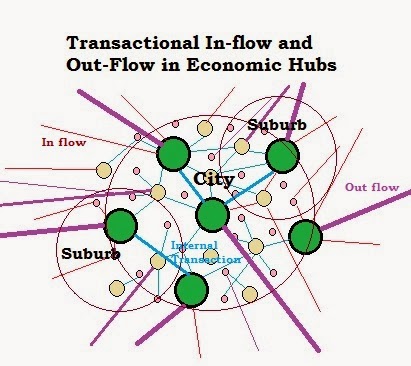Economic development can be either regionalized or
dispersed throughout a nation. Advantages associated with regional development
are discussed by Simon Flynn and how this impacts growth, welfare, inflation,
income distribution, and regional economic inequality (2014). Most nations are
focused on regional development and have gained some success in finding growth
and stability.
Nations that seek to diversify their development
throughout the country may have some difficulty finding enough capital to raise
the nation as a whole. However, by focusing on regional areas it is easier to funnel
resources for greater economic enhancement. Modern regional development seeks
to develop the core as well as the peripheral area around that core for maximum
appeal.
Each nation has their individual strategies for
regional growth and development. Some include equitable income distribution,
GNP increase, GDP increases, productivity development, and international
competition (Kim & Kim, 2002). These concepts are not mutually exclusive.
For example, GNP and GDP are associated with income opportunities and
competitive position.
Regional development can create greater
international economic integration. These follow four patterns or steps such as
Free Trade Agreements, Customs Unions, Common Markets, and Economic Unions
(Holden, 2003). Integration of regional interest is not permanent and can
change forward or backward depending on market needs. When successful, regional trade agreements
can improve upon the flow of goods, services, and information throughout an
area.
Economists are more accepting of regional
integration because it is these sub-national levels that appear to create the
greatest economic momentum. The actors within the market can use their
abilities to adjust their local institutions and resources to market needs
easier than what can be done an on a national scale. When regional economic integration works well
it leads to growth and stability for the whole nation.
Regional economies divert resources to creating
stronger infrastructure, job growth, and industry development. Old institutions may need to change when they
are outdated or no longer foster growth. In the regional development process
both private and public stakeholders should have similar goals in development.
They can create greater ability to utilize resources for the best overall position
within the global marketplace.
Flynn, S. (2014). Economics of regional development.
Research Starters Business.
Kim, E., & Kim, K. (2002).
Impacts of regional development strategies on growth and equity of Korea: A
multiregional CGE model. Annals of Regional Science, 36(1), 165.
Holden, M. (2003). Stages of
economic integration: From autarky to economic union. Government of Canada Depository
Services Program. Retrieved March 24th, 2014 from http://publications.gc.ca/collections/Collection-R/LoPBdP/inbrief/prb0249-e.htm
